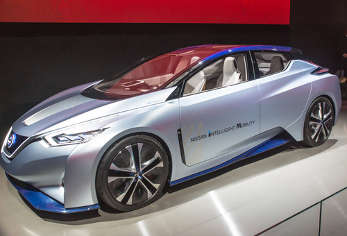Autonomous vehicles (AVs) will be testing on a street near you soon – in fact, they might be there already. Major vehicle manufacturers like Nissan, Volvo and Ford are already testing AVs in the UK.
We may have to wait until 2020 before they are operated commercially, but when it happens the launch will signal the start of a paradigm shift that will revolutionise how we travel. The automotive industry will change beyond all recognition, and the traditional car ownership model looks likely to disappear.
A recent survey of senior auto industry figures by KPMG found that 59% believe more than half of those consumers who own a car today will not want to own a vehicle by 2025. So why is this new model considered so compelling for consumers?
Why do we need Autonomous Vehicles?
A Department for Transport report on Public Attitudes to Buses (2013) found that existing shared services simply cannot offer sufficient convenience, comfort or predictability for consumers, leading people to choose their own cars over public transport.

Nissan's artificial intelligence helps autonomous vehicles make decisions
AVs have the potential to change all that. Advances in artificial intelligence and predictive analytics will facilitate new service configurations in which consumers are taken from door-to-door, with virtually no stops in a comfortable, shared vehicle.
The services will be hailed using a smart phone application or could even be directly linked to consumers’ digital calendars. Additionally, they can be delivered at a cost to the consumer that is equivalent to that of a bus ride, without government subsidy.
The road to AVs
So how do we get there? Every company is taking a slightly different approach to the technology and there is no standardised way to validate systems before deployment. The standards that do exist fall well short of what is needed for the challenges posed by driverless cars.
UN regulations that ban a vehicle being steered automatically at speeds in excess of 10 mph also need to be re-examined and changed. Any regime that demands independent third-party testing prior to launch would be counter-cultural to an automotive industry that has traditionally always favoured a self-certification approach.
Emerging computer-vision science has meant that a better-than-human perception ability is now feasible, meaning we can develop autonomous vehicles that are far less likely to drive into things than human drivers are.
But this alone isn’t sufficient. For autonomous vehicles to gain public acceptance they will have to drive in a way that other (human) road users expect them to, and they will have to make timely progress in busy traffic, i.e. driving assertively where necessary. It’s a delicate balance, and achieving it means that AVs must be able to anticipate what is likely to happen next in any given scene.
This remains an unsolved challenge, as observed by the higher than average rate of rear-end collisions that many autonomous vehicles have experienced in testing.
Mobility as a Service - the new model
In developed economies, experts have predicted an impending shift to commercial transport services based on a Mobility-as-a-Service model, which will precipitate a decline in personal vehicle ownership and the rise of an Uber-like service using AVs. The lack of a driver makes journeys more cost effective per mile.
Good news for consumers, but for automakers the picture is more mixed. Overall demand for vehicles will fall in developed economies. Operators, not consumers, will be the main purchasers and the preferred brand of the car will become less relevant.
Service providers will spring up to service, clean and maintain these fleets of autonomous vehicles. Safety records, vehicle comfort, connectivity and cost of ownership will be service differentiators. Low-cost manufacturers like China’s SAIC and contract assemblers like Canada’s Magna could cash in if commoditised vehicles and hardware come to the fore.
There is little doubt that the traditional car ownership model will struggle to survive. What remains to be seen is how the auto and transit industries will come together to find ways in which services can be safely launched, extended and ultimately adopted.
Thereafter, it should be relatively easy and frictionless to expand services and promote the significant improvements to all of our lives that autonomous vehicles can deliver.
Stan Boland is CEO of FiveAI
Register now for full access
Register just once to get unrestricted, real-time coverage of the issues and challenges facing UK transport and highways engineers.
Full website content includes the latest news, exclusive commentary from leading industry figures and detailed topical analysis of the highways, transportation, environment and place-shaping sectors.
Use the link below to register your details for full, free access.
Already a registered? Login